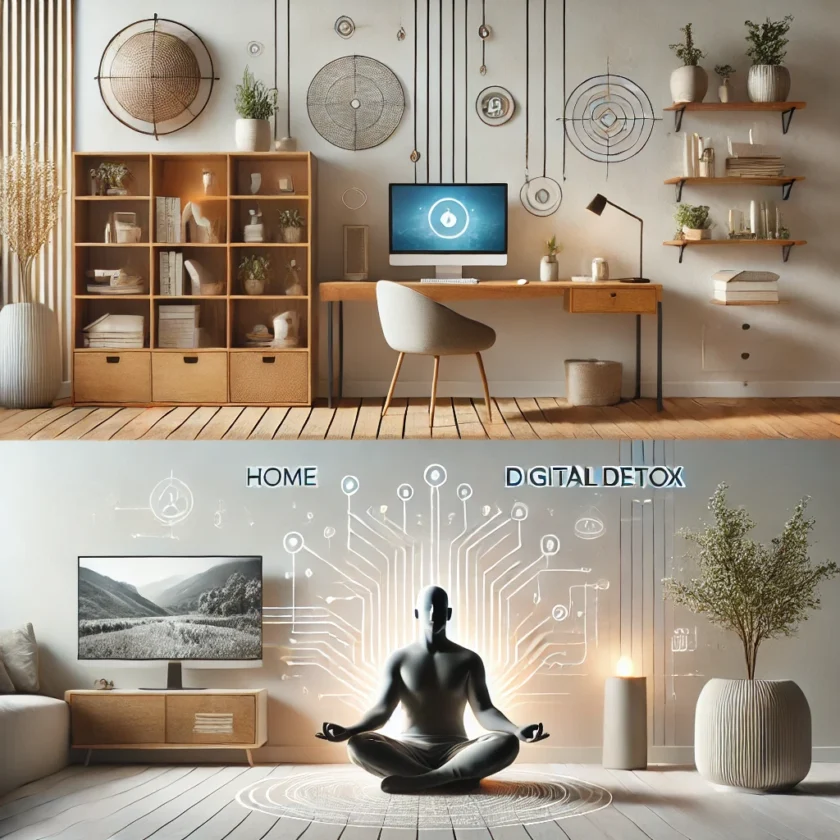
In a world that constantly encourages us to buy more, do more, and be more, minimalism offers a refreshing alternative. The minimalist lifestyle is not about deprivation or sacrificing comfort; rather, it is about intentional living, clarity, and focusing on what truly adds value to your life. As we enter 2024, minimalism has evolved beyond just decluttering physical spaces—it is now a holistic approach to life, influencing mental well-being, digital habits, relationships, and even finances.
The philosophy of minimalism is simple: less is more. However, in a society driven by consumerism, shifting to a minimalist mindset requires a conscious effort and a deep understanding of what truly matters. Minimalism is not a rigid set of rules but a personalized journey towards a more fulfilling life.
In this comprehensive guide, we will explore:
- The core principles of minimalism and why they matter
- How minimalism improves mental and emotional well-being
- Practical steps to simplify your home, wardrobe, and digital space
- How to cultivate a minimalist mindset and avoid common pitfalls
- The financial and environmental benefits of minimalism
- Mindful consumption and how to build habits that align with your values
By the end of this guide, you’ll have a clear roadmap to help you embrace minimalism in a way that suits your lifestyle, bringing you more peace, happiness, and freedom.
Chapter 1: The Core Principles of Minimalism

1.1 What is Minimalism, and Why is it More Relevant in 2024?
Minimalism is a lifestyle philosophy that focuses on eliminating excess and distractions to make room for what truly matters. It is about being intentional with your choices, whether they involve physical possessions, relationships, or commitments. The goal is to achieve clarity, simplicity, and fulfillment.
In recent years, the effects of fast fashion, digital overload, and materialism have led many to feel overwhelmed and disconnected from their true desires. 2024 marks a shift toward conscious living, where people are prioritizing mental well-being, sustainability, and financial independence over excessive consumption.
Why Minimalism is Gaining Popularity:
- Mental Clarity & Stress Reduction – Studies show that cluttered spaces contribute to higher cortisol levels, increasing anxiety and reducing focus.
- Sustainability & Eco-Consciousness – With climate change concerns on the rise, many are turning to minimalism as a way to reduce waste and make mindful purchases.
- Financial Freedom – By spending less on unnecessary things, individuals can allocate more resources to experiences, investments, and savings.
- Increased Productivity & Focus – Simplifying commitments and daily routines eliminates distractions and improves efficiency.
- Stronger Relationships – Choosing quality over quantity in social interactions leads to deeper, more meaningful connections.
1.2 The Myths and Misconceptions About Minimalism
Despite its many benefits, minimalism is often misunderstood. There are several myths surrounding this lifestyle that may discourage people from embracing it.
Myth #1: Minimalism Means Owning Barely Anything
Many believe that minimalism requires extreme decluttering—living with only a bed, a chair, and a few outfits. In reality, minimalism is about keeping what serves a purpose or brings joy, not about deprivation.
Myth #2: Minimalism is Just About Getting Rid of Stuff
Decluttering is just one aspect of minimalism. True minimalism is a mindset shift that extends to time management, relationships, digital consumption, and even emotional well-being.
Myth #3: Minimalism is Only for the Wealthy
Some believe that adopting a minimalist lifestyle requires expensive, high-end products. However, minimalism is actually about spending less and making the most of what you already have.
Myth #4: Minimalism is Boring or Restrictive
Minimalism does not mean living in an empty space with no decorations. It is about surrounding yourself with things that truly reflect your values and bring you happiness.
1.3 The Psychological and Emotional Benefits of Minimalism
Minimalism is not just about creating a clutter-free environment—it has profound psychological and emotional effects. Scientific studies show that a minimalist lifestyle can contribute to lower stress levels, improved focus, and greater overall happiness.
How Minimalism Positively Impacts Mental Health:
- Less Decision Fatigue – Reducing choices (such as a simplified wardrobe) helps conserve mental energy for more important decisions.
- Improved Focus & Productivity – Removing distractions allows for higher efficiency in work and personal projects.
- Enhanced Emotional Stability – Letting go of excess physical and emotional baggage promotes peace and clarity.
- Increased Gratitude & Contentment – Minimalism fosters appreciation for what you already have, reducing the need for constant validation through material possessions.
- More Time for Meaningful Activities – Instead of spending hours shopping or managing clutter, minimalists dedicate time to hobbies, relationships, and self-care.
1.4 How to Start Your Minimalist Journey
Embracing minimalism does not mean making drastic changes overnight. Instead, it’s about small, intentional steps that gradually lead to a simpler and more fulfilling life.
Practical Steps to Begin:
- Identify Your Goals: Ask yourself why you want to adopt a minimalist lifestyle. Are you looking to reduce stress? Save money? Live more sustainably?
- Start with One Area: Focus on a specific category—your wardrobe, kitchen, or digital space—to avoid feeling overwhelmed.
- Declutter with Purpose: Use the “Does this serve a purpose?” or “Does this bring me joy?” method to decide what stays and what goes.
- Create a One-In-One-Out Rule: Whenever you bring something new into your life, remove an old item.
- Limit Impulse Purchases: Before buying anything, ask yourself if it aligns with your values and long-term needs.
- Digitally Detox Your Life: Unsubscribe from unnecessary emails, delete unused apps, and set limits on screen time.
- Embrace Mindful Consumption: Instead of buying on impulse, focus on quality over quantity and invest in long-lasting, meaningful purchases.
- Prioritize Experiences Over Possessions: Spend money on travel, education, and relationships rather than material goods.
Minimalism is not about perfection—it’s about progress. Each small change leads to a life filled with more freedom, clarity, and happiness.
Chapter 2: Decluttering Your Life – Home, Digital Space, and Mind

Decluttering is one of the first and most impactful steps in embracing minimalism. It is not just about getting rid of excess belongings, but also about eliminating distractions, noise, and unnecessary obligations that take up space in your life. True minimalism means curating your environment, digital habits, and mental space to create more room for what truly matters.
2.1 Decluttering Your Home: The KonMari Method vs. Essentialism
A clutter-free home leads to a clutter-free mind. When we surround ourselves with excessive possessions, we unintentionally create mental and emotional baggage. Decluttering helps us break free from the weight of unnecessary items, allowing us to enjoy a more peaceful and harmonious living space.
There are two primary approaches to home decluttering:
The KonMari Method:
- Created by Marie Kondo, this method focuses on joy—only keeping items that spark happiness.
- Encourages decluttering by category (clothing, books, sentimental items) instead of room-by-room.
- Involves a deep emotional connection with possessions, encouraging gratitude for each item before discarding.
- Helps individuals reframe their relationship with material things, making future consumption more mindful.
The Essentialist Approach:
- Focuses on functionality and necessity rather than emotional attachment.
- Encourages keeping only the absolute essentials for daily living.
- Prioritizes ongoing decluttering, rather than a one-time purge.
- Helps maintain a minimalist lifestyle by constantly reassessing what is truly important.
Regardless of which method you choose, the key to a minimalist home is ensuring that every item serves a purpose or brings value to your daily life.
2.2 Digital Minimalism: Reducing Information Overload
In the digital age, decluttering goes beyond physical possessions. With smartphones, social media, and endless notifications, digital clutter can be just as overwhelming as a messy home. Practicing digital minimalism allows you to reclaim your attention and time.
Signs You Need Digital Minimalism:
- You feel overwhelmed by unread emails, notifications, and social media updates.
- You spend hours scrolling without gaining any real value.
- Your devices feel disorganized, cluttered with unused apps, documents, and downloads.
- You feel mentally exhausted after prolonged screen time.
Steps to Achieve Digital Minimalism:
- Unsubscribe from unnecessary emails and newsletters.
- Organize digital files and delete duplicates or outdated documents.
- Set screen time limits to reduce social media scrolling and app usage.
- Turn off non-essential notifications to stay focused on what matters.
- Use a minimalist phone layout with only essential apps on the home screen.
- Unfollow accounts that do not add value to your life.
- Take regular social media detoxes to reset your focus and mental clarity.
- Practice mindful content consumption—prioritize meaningful, educational, or inspiring content over mindless scrolling.
2.3 Decluttering Your Mind: Letting Go of Mental Clutter
Minimalism is not just about cleaning up physical and digital spaces; it’s also about decluttering your thoughts, anxieties, and unnecessary commitments. A cluttered mind leads to stress, procrastination, and decision fatigue.
How to Declutter Your Mind:
- Limit decision fatigue by simplifying daily choices (e.g., meal planning, capsule wardrobe).
- Practice journaling to organize thoughts and let go of negative emotions.
- Set clear priorities and avoid multitasking.
- Let go of past regrets and future worries—focus on the present moment.
- Create a minimalist schedule by removing unnecessary commitments.
- Use meditation and mindfulness practices to cultivate inner peace and clarity.
2.4 The Emotional Challenges of Decluttering and How to Overcome Them
Decluttering is not always easy—especially when we have strong emotional attachments to our belongings. Many people struggle with guilt, nostalgia, and the fear of letting go.
Common Emotional Roadblocks:
- Guilt Over Wasting Money – Feeling regretful for past purchases.
- Fear of Needing Something Later – The “just in case” mentality keeps people from decluttering.
- Sentimental Attachments – Holding onto items due to emotional value rather than practical use.
How to Overcome Emotional Resistance:
- Shift your mindset: Instead of focusing on loss, focus on the gains of minimalism—more space, freedom, and clarity.
- Donate items to people in need: Knowing that your items will help others makes letting go easier.
- Keep digital memories: Take photos of sentimental items before parting with them.
- Start small and build momentum: Declutter in phases rather than all at once.
2.5 Minimalism as a Continuous Journey
Minimalism is not a one-time event—it is an ongoing process. The goal is not just to declutter once and be done, but to adopt habits that prevent clutter from returning. By regularly reassessing your possessions, commitments, and digital habits, you can ensure that minimalism remains a sustainable way of life.
Conclusion
Minimalism in 2024 is more than just decluttering your home—it is about simplifying your entire life. By embracing intentionality, mindfulness, and conscious consumption, you can create more space for joy, peace, and fulfillment. Minimalism is a journey, not a destination—start small, stay consistent, and enjoy the freedom that comes with living with less.




